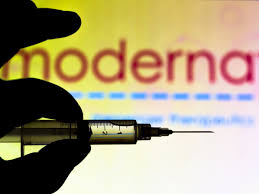Senate Republican Open Michigan Safely Proposal
Note: This document is a proposal that may be refined and improved over time with input from the medical community, healthcare systems and others with relevant expertise.
Proposal Overview
The Senate Republican caucus believes it is our responsibility to propose a framework for Michiganders to live life in the presence of COVID-19 while also minimizing risk. We now have data and experience to allow us to transition from the definition of “essential” to a new standard of allowed activity defined as “safe.” Specifically, safe workplaces. The premise and challenge: defining and executing safe workplace policies and protocols so individuals can approach being as safe in their workplaces as they can be in their homes.
The cornerstone of our proposal is strict adherence to handwashing, social distancing, and use of masks. Our proposed framework considers phases of transition, geographic differentiation, and plans for resurgence, as described below.
Phases of Transition
Transitions are separated into five phases. Each phase considers testing capabilities, healthcare systems capacity for COVID-19 patients and treatment, availability of personal protective equipment, available data, and ultimately a vaccine or similar medical breakthrough to combat COVID-19. Each phase outlines conditions in the state, suggested safe business operations, and guarded levels of citizen activity.
Geographic Differentiation
COVID-19 does not recognize geographical boundaries, but its impact on the state varies significantly by region. Different regions of Michigan should be permitted to operate at different phase levels based on the available data within the region. Areas such as southeast Michigan that are experiencing high case volume and high death rates should be restricted to early phases, while the Upper Peninsula may be able to safely operate under a later phase designation that appropriately reflects risk in that region.
Resurgence Plans
Michigan must be prepared to adjust to surges in COVID-19 cases. Until a significant medical breakthrough is achieved that markedly reduces risk for the entire population, such as a vaccine, our citizens will likely live with recurring outbreaks of the virus for months or longer. The state must develop resurgence plans that require tightening of restrictions on behavior and activity within regions of our state to combat COVID-19. Resurgence plans would utilize known strategies such as extreme social distancing, temporary closures, wearing masks, and/or other measures. The goal is for the phases represented to become a continuum so that, based on infection rates and healthcare capacity data, we may advance up or down in phases to mitigate risk and spread of the virus.
Senate Republican Caucus ‘Open Michigan Safely’ Phases of Transition
Notes: This document is a proposed template that may be refined and improved over time with input from the medical community, healthcare systems, and others with relevant expertise.
- Classifications of risk levels for employees and protections to take at those levels as outlined by OSHA, https://www.osha.gov/Publications/OSHA3990.pdf
- The time periods in each phase represent the days since the entry of the previous phase.
- Healthcare system capacity percentages are for COVID-19 caseload.
Phase 1 (Stay-at-Home Order)
Conditions
- Cases and deaths are rising and on track to exceed (or are already exceeding) healthcare system capacity.
Business Activity
- The only medium exposure risk businesses open to the public are those necessary to sustain or protect life and health. These establishments are only permitted to operate with enhanced safety protocols and should adopt CISA guidelines issued March 28, 2020. (https://www.cisa.gov/publication/guidance-essential-critical-infrastructure-workforce)
- Businesses whose employees are lower exposure risk as described by OHSA and can maintain social distancing of employees at least 6 feet apart or provide appropriate PPE, as well as other safety protocols, may operate.
Citizen Activity
- Mobility limited to essential local travel or to low risk businesses that meet safety protocols.
- If an essential activity must be performed, masks should be worn to cover the nose and mouth to prevent droplets from coughing or sneezing from spreading to other objects or individuals.
- Extreme compliance at the individual level on hygiene (handwashing), distancing, and wearing masks while in public.
Phase 2
Conditions
- Cases and deaths fall for five out of seven days and the healthcare systems are below 75% capacity.
Business Activity
- Lower exposure risk businesses can operate that are:
- Closed to the public, where employees comply with safety protocols.
- Open to the public with extreme social distancing, such as outdoor recreational activity.
Citizen Activity
- Masks should be worn to cover the nose and mouth to prevent droplets from coughing or sneezing from spreading to other objects or individuals.
- Individuals with symptoms of or exposure to COVID-19 are requested to self-isolate for 14 days.
- Vulnerable individuals (based on age and health) will continue to follow Stay-at-Home Order.
- Large gatherings are still prohibited.
- Limited local mobility and for essential needs only, restrained interregional mobility.
- Extreme compliance at the individual level on hygiene (handwashing), distancing, and wearing masks while in public.
Phase 3
Conditions
- Cases and deaths fall for 17 out of 21 days and the healthcare systems are below 50% capacity.
Business Activity
- In addition to the business activity outlined in Phase 2, social businesses that can operate that are:
- Open to the public with social distancing.
- Bars and restaurants limited to 50% capacity with groups seated 6 feet from each other.
- Gatherings with less than 100 individuals are allowed.
- Open to the public with social distancing.
Citizen Activity
- Masks should be worn to cover the nose and mouth to prevent droplets from coughing or sneezing from spreading to other objects or individuals.
- Individuals are encouraged to test for COVID-19 antibody.
- Individuals with symptoms of or exposure to COVID-19 are requested to self-isolate for 14 days.
- Vulnerable individuals (based on age and health) will continue to follow Stay-at-Home Order.
- Some restrictions to local mobility, limited interregional mobility.
- Extreme compliance at individual level on hygiene, distancing, and wearing masks while in public.
Phase 4
Conditions
- Cases and deaths fall for 19 out of 21 days and the healthcare systems are below 33% capacity.
- Individuals who desire testing for the virus or the antibody have access to receive these tests (i.e., the state is not experiencing a shortage of tests).
Business Activity
- In addition to the business activity outlined in Phase 2 and Phase 3, social businesses that can operate that are:
- Open to the public with medium-sized crowds.
- Bars and restaurants at full seating capacity.
- Gatherings with less than 250 individuals are allowed.
- Open to the public with medium-sized crowds.
Citizen Activity
- Individuals with symptoms of or exposure to COVID-19 are requested to self-isolate for 14 days.
- Stay-at-Home Order is lifted for vulnerable individuals (based on age and health).
- Mask and social distancing limitations are removed.
- No local mobility restrictions, advise interregional mobility.
Phase 5
Conditions
- No active spread for 30 days or a vaccine has been available for 30 days.
Business Activity
- In addition to business activity outlined in Phase 2, 3 and 4, all remaining restrictions are removed, and entertainment businesses can operate that are:
- Open to the public.
- Festivals, concerts, sporting events.
- Open to the public.
Citizen Activity
- Individuals with symptoms of or exposure to COVID-19 are requested to self-isolate for 14 days.
- All other remaining restrictions removed.
- No restrictions on local mobility or interregional mobility in Phase 5.



